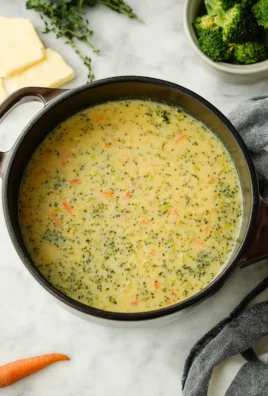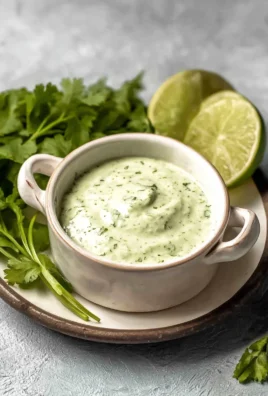Blueberry rhubarb jam is a delicious combination of sweet and tart flavors, making it a perfect homemade preserve. This jam is a great way to enjoy fresh summer blueberries and rhubarb all year round. It pairs well with toast, biscuits, pancakes, and even as a filling for desserts.

Unlike store-bought jams, homemade versions allow you to control the sweetness and avoid preservatives. The natural pectin in blueberries and rhubarb helps create a thick, luscious texture without needing added thickeners. This recipe is simple, requiring only a few ingredients and minimal effort.
History and Cultural Significance
Jam-making dates back centuries, originally developed as a method to preserve fruits for long-term storage. Blueberry and rhubarb have been used in jams and preserves for generations, particularly in regions where both ingredients grow abundantly.
Rhubarb, known for its tartness, has been cultivated since ancient times and was commonly used in traditional European preserves. Blueberries, native to North America, have been a staple in indigenous diets and later became a favorite fruit in jams. The combination of these two ingredients creates a balance of flavors that has been enjoyed for decades.
Preparation Phase & Tools to Use
Prep Time, Cook Time, and Yield
- Prep Time: 15 minutes
- Cook Time: 45 minutes
- Cooling Time: 1 hour
- Total Time: 1 hour 45 minutes
- Yield: About 4-5 cups
Essential Tools and Equipment
- Large saucepan or Dutch oven – Prevents burning and ensures even cooking.
- Wooden spoon or silicone spatula – For stirring and preventing scorching.
- Candy or digital thermometer – Helps monitor the cooking temperature.
- Sterilized mason jars with lids – For safe storage and extended shelf life.
- Ladle and jar funnel – Makes transferring jam into jars easier.
- Water bath canner (optional) – For long-term preservation.
Preparation Tips for Best Results
- Use fresh ingredients – Fresh blueberries and rhubarb yield the best flavor.
- Cut rhubarb into small pieces – Ensures even cooking and a smoother jam texture.
- Balance sweetness – Adjust sugar based on personal preference and fruit ripeness.
- Simmer gently – Prevents burning and allows flavors to develop properly.
Ingredients List
- 4 cups fresh blueberries (or frozen, thawed)
- 3 cups rhubarb, diced
- 3 cups granulated sugar
- 2 tablespoons lemon juice (for acidity and preservation)
- 1 packet pectin (optional) (for a firmer set)
Step-by-Step Cooking Instructions
Prepping the Ingredients
- Wash blueberries and remove any stems.
- Rinse rhubarb and cut into small, ½-inch pieces.
- Sterilize jars and lids by boiling them in water for 10 minutes.
Cooking the Jam
- In a large saucepan, combine blueberries, rhubarb, and sugar.
- Stir over medium heat until sugar dissolves.
- Add lemon juice and bring the mixture to a simmer.
- Cook for 30-40 minutes, stirring frequently to prevent sticking.
- If using pectin, add it according to package instructions.
- Check the consistency by placing a small spoonful on a cold plate—if it wrinkles when pushed, it’s ready.
- Remove from heat and let it cool for 10 minutes.
Canning & Storing the Jam
- Carefully ladle the hot jam into sterilized jars, leaving ¼-inch space at the top.
- Wipe jar rims clean and seal with lids.
- Process in a water bath canner for 10 minutes for long-term storage.
- If refrigerating, let jars cool completely before storing.
Side Dish Recommendations
Blueberry rhubarb jam is a versatile spread that pairs well with both sweet and savory dishes. Whether served for breakfast, as a dessert topping, or as part of a charcuterie board, this jam can enhance many flavors.
Best Ways to Enjoy Blueberry Rhubarb Jam
- On Toast & Bread – Spread it over buttered toast, croissants, or warm biscuits.
- With Pancakes & Waffles – Drizzle over pancakes or mix into waffle batter.
- Swirled into Yogurt & Oatmeal – Adds natural sweetness and tartness to a morning bowl.
- Paired with Cheese & Crackers – Complements creamy cheeses like brie, goat cheese, or cream cheese.
- Used as a Cake & Pastry Filling – Perfect for danishes, thumbprint cookies, and layer cakes.
- In a Salad Dressing – Mix with balsamic vinegar and olive oil for a fruity vinaigrette.
- Glaze for Meat Dishes – Works well as a glaze for pork, chicken, or duck.
8 Perfect Side Dish Pairings
- Homemade Buttermilk Biscuits – The flaky texture soaks up the jam beautifully.
- Classic French Toast – Adds a fruity twist to traditional breakfast.
- Cheesecake Topping – Complements the creamy and rich flavors.
- Ricotta & Honey Crostini – A sophisticated appetizer with a balance of sweet and savory.
- Peanut Butter & Jam Sandwiches – A gourmet upgrade to a childhood favorite.
- Ice Cream Topping – Drizzle over vanilla or cheesecake-flavored ice cream.
- Charcuterie Board Addition – Pairs with nuts, fresh fruits, and cured meats.
- Greek Yogurt Parfait – Layered with granola and fresh fruit for a nutritious breakfast.
Nutritional Information & Health Benefits
Blueberry rhubarb jam is not only delicious but also offers several health benefits. The combination of blueberries and rhubarb provides essential vitamins, antioxidants, and fiber.
Nutritional Profile (Per Tablespoon)
- Calories: 40-50 kcal
- Carbohydrates: 10-12g
- Sugar: 8-10g
- Fiber: 1g
- Vitamin C: Supports immune function and skin health.
- Antioxidants: Blueberries are rich in anthocyanins, which help reduce inflammation.
- Low in Fat: Makes it a guilt-free addition to a balanced diet.
Health Benefits of Blueberry Rhubarb Jam
- Rich in Antioxidants – Blueberries protect against oxidative stress.
- Aids Digestion – Rhubarb contains fiber that supports gut health.
- Supports Heart Health – Low in fat and free from artificial preservatives.
- Regulates Blood Sugar – The natural tartness can help balance blood sugar levels when consumed in moderation.
- Boosts Immunity – The vitamin C from rhubarb and blueberries strengthens immune defense.
Common Mistakes to Avoid & How to Perfect the Recipe
Mistakes That Can Ruin the Jam
- Overcooking the Jam – Cooking too long can cause it to become overly thick or taste burnt.
- Not Using Enough Sugar – Sugar acts as a preservative; too little may shorten shelf life.
- Skipping Lemon Juice – Lemon juice balances flavors and helps with preservation.
- Adding Too Much Pectin – Can result in a jam that’s too firm or gelatinous.
- Not Sterilizing Jars Properly – Increases the risk of spoilage.
- Not Testing for Doneness – If jam is undercooked, it will be too runny.
How to Fix These Mistakes
- Thinning Overly Thick Jam – Add a bit of hot water or fruit juice and reheat gently.
- Fixing Runny Jam – Reheat and cook a little longer, or add a small amount of additional pectin.
- Reducing Bitterness – If the rhubarb is too tart, balance it with a touch more sugar or honey.
- Avoiding Crystallization – Stir sugar completely into the fruit mixture before cooking.
- Preserving Longer – Always store in sterilized jars and refrigerate after opening.
Tips for Storing & Reheating
Proper storage is essential to maintain the flavor, texture, and safety of homemade blueberry rhubarb jam. Whether you’re planning to use it within a few weeks or store it for months, following the correct methods ensures long-lasting freshness.
Short-Term Storage (Refrigerator Method)
- Allow the jam to cool completely before sealing the jars.
- Store in clean, airtight glass jars with tight-fitting lids.
- Keep in the refrigerator for up to 3 weeks.
- Always use a clean spoon to scoop out jam to prevent contamination.
Long-Term Storage (Canning Method)
- Use sterilized mason jars and a water bath canning method.
- Ensure proper sealing by checking if the lids pop down after cooling.
- Store in a cool, dark pantry for up to 1 year.
- Refrigerate after opening and consume within a few weeks.
Freezing Option
- Pour jam into freezer-safe containers, leaving some space for expansion.
- Store in the freezer for up to 6 months.
- Thaw in the refrigerator overnight before use.
Reheating & Using Leftover Jam
- If the jam thickens too much in storage, gently warm it in a saucepan with a little water.
- Use as a topping for desserts, mix into salad dressings, or blend into smoothies.
Frequently Asked Questions (FAQs)
Can I use frozen blueberries instead of fresh?
Yes, frozen blueberries work well, but they may release more liquid. If using frozen berries, reduce cooking time slightly to prevent excessive moisture.
Do I have to use pectin?
No, pectin is optional. Blueberries and rhubarb contain natural pectin, which helps thicken the jam. If you prefer a firmer consistency, adding a small amount of pectin can help.
Why does my jam taste bitter?
Rhubarb is naturally tart and can sometimes taste bitter if not balanced with enough sugar. Adding lemon juice and adjusting the sugar amount can help.
Can I make this jam with less sugar?
Yes, but reducing sugar may affect the jam’s texture and shelf life. Using natural sweeteners like honey or maple syrup is an alternative, but keep in mind that the jam may be runnier.
How do I fix jam that’s too runny?
If your jam is too thin after cooling, reheat it and simmer for an additional 5-10 minutes. If needed, add a little extra pectin or cornstarch slurry to help thicken.
How do I know if my jam has spoiled?
Signs of spoiled jam include:
- Mold growth on the surface.
- A sour or off smell.
- Bubbles or fizzing when opened (indicating fermentation).
- A cloudy or discolored appearance.
If any of these occur, discard the jam immediately.
Conclusion & Final Thoughts
Making homemade blueberry rhubarb jam is a rewarding process that results in a flavorful, versatile spread. The combination of tart rhubarb and sweet blueberries creates a perfect balance that enhances breakfasts, desserts, and even savory dishes.
By following proper cooking techniques, storage methods, and troubleshooting tips, you can enjoy homemade jam year-round. Whether you’re an experienced jam maker or a beginner, this recipe is simple, delicious, and sure to become a favorite.
Try experimenting with different flavors, such as adding vanilla, cinnamon, or even a splash of balsamic vinegar for a unique twist. With a little patience and creativity, you can create a jam that perfectly suits your taste preferences.
Enjoy your homemade blueberry rhubarb jam!

Blueberry Rhubarb Jam
- Total Time: 1 hour 45 minutes
- Yield: About 4-5 cups 1x
- Diet: Vegetarian
Description
This blueberry rhubarb jam is the perfect combination of sweet and tart flavors, made with fresh ingredients and no preservatives. Whether spread on toast, mixed into yogurt, or used as a dessert topping, this easy homemade jam is a delicious way to enjoy blueberries and rhubarb year-round.
Ingredients
- 4 cups fresh blueberries (or frozen, thawed)
- 3 cups rhubarb, diced
- 3 cups granulated sugar
- 2 tablespoons lemon juice
- 1 packet pectin (optional)
Instructions
- Prepare Ingredients: Wash blueberries, dice rhubarb, and sterilize jars.
- Combine Ingredients: In a large saucepan, mix blueberries, rhubarb, and sugar. Stir over medium heat until sugar dissolves.
- Cook the Jam: Add lemon juice and simmer for 30-40 minutes, stirring frequently.
- Check Consistency: Test on a cold plate—if it wrinkles when pushed, it’s ready.
- Canning (Optional): Pour hot jam into sterilized jars, leaving ¼-inch space at the top. Seal jars and process in a water bath for long-term storage.
- Cooling & Storage: Let jars cool before refrigerating or storing in the pantry.
Notes
- For a thicker jam, use pectin or cook a little longer.
- Adjust sugar based on fruit ripeness.
- Store refrigerated for up to 3 weeks or canned for up to 1 year.
- Jam thickens as it cools.
- Prep Time: 15 minutes
- Cook Time: 45 minutes
- Category: Condiment / Preserve
- Method: Stovetop
- Cuisine: American
Nutrition
- Calories: 40-50 kcal
- Sugar: 8-10g
- Carbohydrates: 10-12g
- Fiber: 1g




Leave a Comment